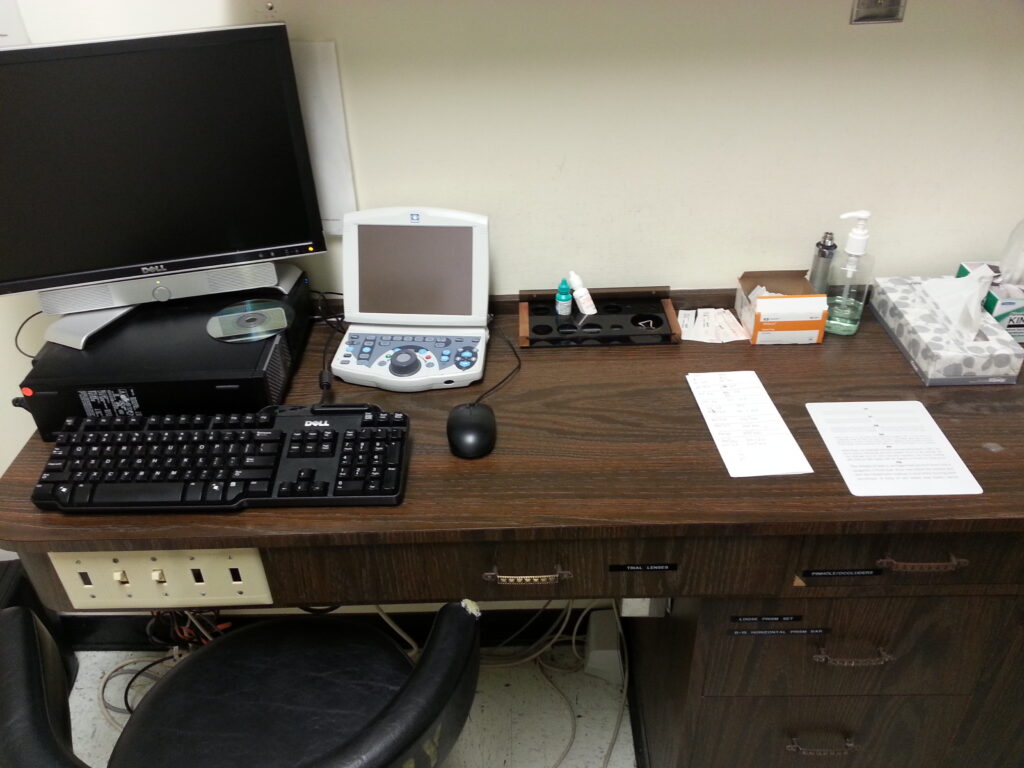The Rotations Experience
Dear Diary,
Fourth year clinical rotations are the pinnacle of optometry school that all students are anxious for. It’s a time of freedom, learning, and exposure to parts of optometry you may never see in the school clinic. Or is it?
My name is Lawrence Yu, and I just started my clinical rotations as a fourth year student at the Southern California College of Optometry at Marshall B. Ketchum University. Through this blog, I will chronicle and share my rotations experience throughout the year at my four different sites. Join me as I leave the safety of the school clinic and enter the real world of optometry. Learn with me as I see some crazy eye diseases. Suffer with me as I endure moving every 2.5 months. Follow me and prepare yourself for your last year of optometry school.
—
Friday, June 6, 2014
SIR, YES, SIR: Day 12 of 79 at Naval Medical Center of San Diego
There were no patients that Wednesday morning for my first day at the Marine Corps Recruit Depot, a branch clinic of the Naval Medical Center. As I sat in my exam room, I admired the musty smell of tradition as this location has been training marines since 1919. I had been introduced that I’d be seeing fresh recruits just a few days after they flew away from home to start the process of becoming a marine. Becoming a marine meant intense physical and mental training to break the person down and build the marine up. But at the moment, I simply sat in silence and read my disease notes while waiting for patients to arrive.
“STAND IN LINE AND FACE THE WALL!” “SIR, YES, SIR!” was the reply from what sounded like a hundred men. The command was shouted in the loudest voice I had ever heard, and the unison with which the reply came frightened me. I snuck a look outside in the hallway and I saw dozens of young men with buzz-cuts, white shirts, and khaki pants lining up in rows. These were the recruits, and they were standing straight up and looking straight ahead. Drill instructors circled the group and shouted at whoever was not looking straight. I was too intimidated to look any longer, and I stood in my room thankful that my parents never forced me to join the military (I’d never survive the discipline!).
That day I saw 20 recruits in a few hours of work. Each exam took about 10-15 minutes without dilation although the goal is 5 minutes. Although each patient was very young and healthy, I learned how to speed up my refraction and slit lamp examination. We all know how to refract, but only after doing it over and over again in one sitting will you learn how to do it quickly and accurately. I picked up on using auditory cues like the speed of which they read the letters to know when to end JCC even if the patient doesn’t say “same.” With slit lamp, I learned to evaluate multiple parts of the eye during one sweep with the beam. On the second day of seeing recruits, my exam time was down to 8-10 minutes, but I still trembled whenever the drill instructor shouted at the recruits outside my room.
During these intense sessions examining recruits as quickly as I could, I learned a few things:
– Always look at unaided VAs before beginning refraction so you know what to expect in terms of magnitude.
– If the subjective responses don’t make sense, instill a drop of artificial tear because instability of the tear film is leading to poor intermittent vision.
– Some people are very sensitive about learning that they need to wear glasses. Don’t address it too casually.
– Some young people can take a lot more cylinder than you expect for a first pair of glasses. Some can barely take any. It’s different for everyone, so consider trial framing first time cylinder.


